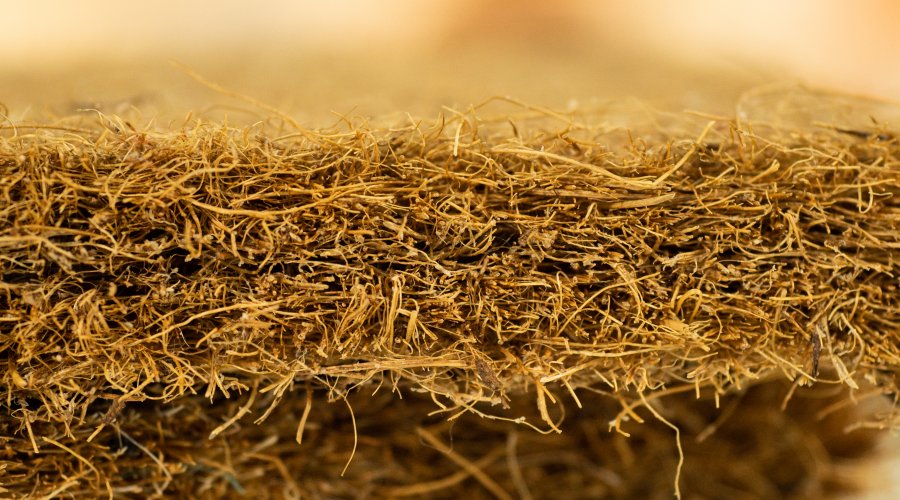What Is Coco Coir And How To Prepare It?
- Monday, 17th Jan, 2022
- Admin

Coco coir is a byproduct of coconut fiber. It was discovered as an organic, environmentally sustainable substrate when new production methods made it possible to create harder products.
Coco coir is manufactured using fiber that’s torn from coconut shells. The tiny grains of coir is extracted from the coconut shell and pulverized into a packable growing substrate. First, the coconuts go through the retting process, a curing method that naturally decomposes the husk’s pulp. Traditionally, coconut husks were immersed in water for six months or longer to decompose. Today, the retting process can be completed in a little over a week using modern mechanical techniques.
Next, the coconut fiber is removed from the shells by steel combs, in a process known as defibering. Once the fiber, or coir, is gathered from the husk, it’s then dried, pressed into bricks, discs, coir pots. or bagged as a loose mulch. In this dried, processed state, the coir is ready to sell and use.
There are three basic types of processed coco coir: pith, fiber, or chips. Using a mixture of the different types has its benefits.
Coco Peat, or pith, looks similar to peat moss but is a rich, brown color. The density of this product means it retains water extremely well — so for this reason, you might not want to use just coco peat, because it could swamp the roots of your plants.
Coco fibers are stringy bundles that allow oxygen to easily penetrate a plant’s root system. By itself, the fiber is not very absorbent and will break down over time, which decreases how much air gets to the roots of your plants. However, it is hardy enough for reuse.
Coco chips are small chunks of coir that combine the best properties of peat and fiber. Coco chips retain water well, but also allow for air pockets, too.
Let’s take a moment to cover the pros of this hydroponic grow medium.
Quick harvests and big yields: When used for drain-to-waste growing, coco coir gives excellent results. With the right coco coir nutrients in your water bath, your plants spend less time searching for food and more time growing. Learn more about using the right coco coir nutrients here.
Plenty of room for the root system: Coco coir offers a rare combination of excellent water retention, reliable drainage, and ideal aeration. It gives the roots plenty of room, allowing for optimum air exposure.
pH-neutral value: Coco coir has a neutral pH range of 5.2–6.8, but you’ll still need nutrient support because this range will fluctuate over time. Learn why maintaining a balanced coco coir pH is so important here.
Minimizes harmful pathogens and reduces the risk of pests: This medium boasts antifungal properties, which keeps the roots happy. It can repel some pests, meaning your grow is easier to maintain.
Environmentally conscious product: On average, a coconut tree produces 150 coconuts annually. Coco coir uses parts of the fruit that used to go to waste.
Reusable medium: When properly treated, coco coir can be reused. It’s durable, but you need to make sure you prep it correctly for the next growth cycle to guarantee a hearty crop.
If you’re an experienced grower, you can prepare your own mixtures from these different types of coco coir, but companies provide premixed products to eliminate all the hassle of doing it yourself.
Looking for coco coir growing media for hydroponics? Choose COCOCHOUSE AUSTRALIA coco coir growing medium, for high quality coir substrate or hydroponic grow medium.